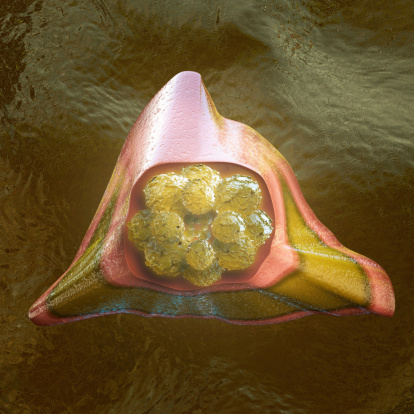Stem Cells to Treat Back Pain
Stem Cells to Treat Back Pain
Beyond the standard, traditional treatments for low back pain, stem cell therapy is an alternative approach that is in its infancy but may become a viable treatment option for many. In simplest form, stem cells are cells that are taken from within the body that can differentiate (develop into specialized cells) to produce more cells. These cells can be targeted to repair tissues within the body including the joints and spine.
Disc degeneration is the process in which the intervertebral discs undergo changes leading to desiccation “drying out” and eventual dysfunction. When this occurs, the mechanics of how the back moves and functions changes. For a subset of the population, this can lead to chronic low back pain. From a scientific standpoint, it is believed that once the disc begins this degenerative process, the discs are unable to heal themselves.
Stem cell research in orthopedics is one of the hottest areas in regenerative medicine. In a few small studies that appear in the literature, the use of mesenchymal stem cells to treat degenerative disc disease showed the potential for positive outcomes including a decrease in pain levels. Safety is a big concern and so far, no adverse effects have been noted.
In one of the largest studies to date (phase 2 study), 100 patients were randomized into several groups at 13 sites located in the U.S. and Australia. One group was injected with a higher dose of mesenchymal precursor cells, a second group with a lesser dose of mesenchymal precursor cells, a third group was injected with hyaluronic acid, and the last group was injected with saline. The authors of the study have reported over 71% of those injected with stem cells met markers for efficacy and safety at 6 months.
Some of the unknowns at present include a standardized protocol to develop the cells into the correct type, methods of implantation, survival once implanted, and promoting cell function and development. Even with all of the research that has been done and published, there is still a lack of complete and total understanding of the processes involved in disc degeneration. Without this knowledge, it can prove challenging to develop strategies and treatments to stop or reverse these processes.
One of the other areas and approaches is the use of platelet rich plasma (PRP). With this approach, blood is withdrawn from a patient, processed and then injected into the diseased area. The theory behind this is that the stem cells are concentrated in the bone marrow and fat which when injected into certain areas, may help promote healing. The problem with this approach is that enough stem cells may not harvested to produce the desired effects. Again, there are many unknowns at this point.
At the present time, most insurance providers do not pay for stem cell therapies as it is still considered experimental. While there may be advantages to this type of treatment, it can be very expensive. The known risks include possible infection and a temporary increase in inflammation following injection
Last modified: January 5, 2018










